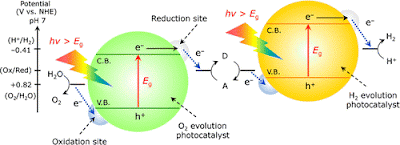Nobel Prize follows a pattern. It is told that a subdivision shouldn't get the price in consecutive years but of course the selection committee has the last laugh. Let's look at the distribution for the past 30+ years:

2017 - Biochemistry
2016 - Organic Chemistry
2015 - Biochemistry
2014 - Physical Chemistry
2013 - Physical Chemistry
2012 - Biochemistry
2011 - Materials Chemistry
2010 - Organic Chemistry
2009 - Biochemistry
2008 - Biochemistry
2007 - Physical Chemistry
2006 - Biochemistry
2005 - Organic Chemistry
2004 - Biochemistry
2003 - Biochemistry
2002 - Biochemistry
2001 - Organic Chemistry
2000 - Materials Chemistry
1999 - Physical Chemistry
1998 - Physical Chemistry
1997 - Biochemistry
1996 - Materials Chemistry
1995 - Organic Chemistry
1994 - Organic Chemistry
1993 - Biochemistry
1992 - Physical Chemistry
1991 - Physical Chemistry
1990 - Organic Chemistry
1989 - Biochemistry
1988 - Biochemistry
1987 - Organic Chemistry
1986 - Physical Chemistry
1985 - Inorganic Chemistry
Please feel free to discuss in the comments down below.

2017 - Biochemistry
2016 - Organic Chemistry
2015 - Biochemistry
2014 - Physical Chemistry
2013 - Physical Chemistry
2012 - Biochemistry
2011 - Materials Chemistry
2010 - Organic Chemistry
2009 - Biochemistry
2008 - Biochemistry
2007 - Physical Chemistry
2006 - Biochemistry
2005 - Organic Chemistry
2004 - Biochemistry
2003 - Biochemistry
2002 - Biochemistry
2001 - Organic Chemistry
2000 - Materials Chemistry
1999 - Physical Chemistry
1998 - Physical Chemistry
1997 - Biochemistry
1996 - Materials Chemistry
1995 - Organic Chemistry
1994 - Organic Chemistry
1993 - Biochemistry
1992 - Physical Chemistry
1991 - Physical Chemistry
1990 - Organic Chemistry
1989 - Biochemistry
1988 - Biochemistry
1987 - Organic Chemistry
1986 - Physical Chemistry
1985 - Inorganic Chemistry
Please feel free to discuss in the comments down below.










